Hot Pepper Quest: India's Spicy Open-World Gaming Phenomenon
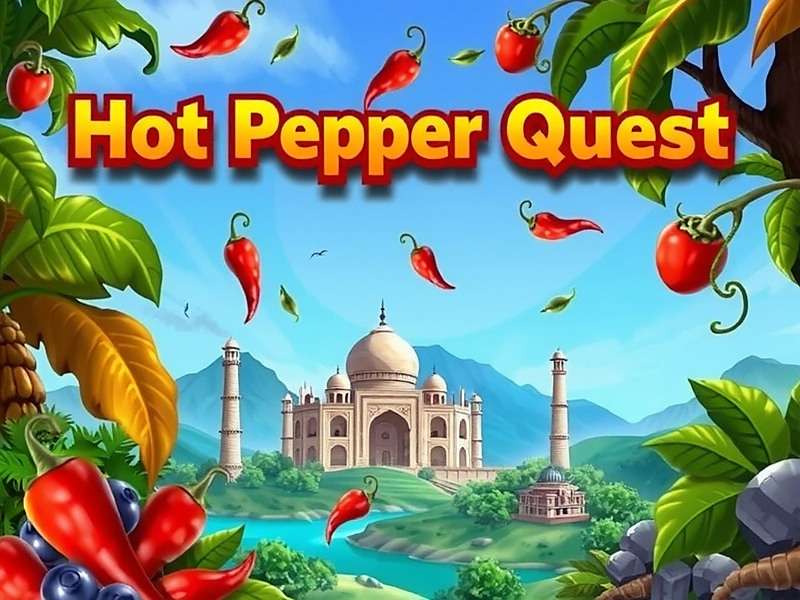
Hot Pepper Quest is not just a game—it's a celebration of India's vibrant culture, spices, and regional diversity packed into an engaging open-world experience. Developed by a team of Indian game enthusiasts who grew up on street food, local festivals, and village tales, this game brings the essence of India to life through every quest, character, and landscape.
From the misty mountains of Uttarakhand to the sun-soaked beaches of Goa, from the busy lanes of Old Delhi to the serene backwaters of Kerala, Hot Pepper Quest invites players to explore India in a way that feels both familiar and adventurous. You'll negotiate with street vendors in Kolkata, participate in kite-flying competitions in Ahmedabad, and solve puzzles in ancient temples of Madurai—all while collecting powerful spices that grant unique abilities.
Since its launch, the game has captured the imagination of millions across India. Whether you're a school student in Pune or a retired teacher in Jaipur, Hot Pepper Quest offers something that resonates with the Indian soul—making it more than a game, but a cultural experience.
🌶️ Download Hot Pepper Quest Now 🔑 Login to Your AccountOverview of Hot Pepper Quest
What is Hot Pepper Quest?
Hot Pepper Quest is an open-world adventure game set in a fictional but culturally accurate representation of India. The game's core premise revolves around the search for the "Legendary Pepper Seeds"—mythical spices said to grant eternal vitality, scattered across 15 different regions of India.
Players take on the role of a "Spice Explorer," tasked with collecting these seeds while respecting local traditions and helping communities. The game blends elements of exploration, puzzle-solving, and light combat, with a strong emphasis on cultural immersion and moral choices.
Unlike many Western open-world games that focus on violence or fantasy, Hot Pepper Quest centers on everyday Indian life—celebrating festivals, cooking local dishes, and engaging with community dynamics. This focus has made it a hit among families, with multiple generations often playing together.
Core Gameplay Loop
The gameplay of Hot Pepper Quest revolves around a simple yet addictive loop:
1. Explore: Traverse diverse Indian landscapes, from deserts to rainforests, interacting with NPCs and discovering hidden locations.
2. Collect Spices: Gather over 30 types of Indian spices, each with unique in-game abilities—from turmeric that heals to black pepper that boosts strength.
3. Complete Quests: Undertake region-specific quests that reflect local traditions, from helping a Punjabi farmer harvest crops to assisting a Bengali family prepare for Durga Puja.
4. Grow Your Reputation: Your actions affect how communities perceive you. Help a village, and they'll share secrets; ignore their troubles, and doors will close.
5. Progress the Story: Uncover the mystery of the Legendary Pepper Seeds while learning about India's rich history and folklore.
This loop ensures that players are constantly engaged, with new regions and spices unlocking as they progress—keeping the adventure fresh and exciting.
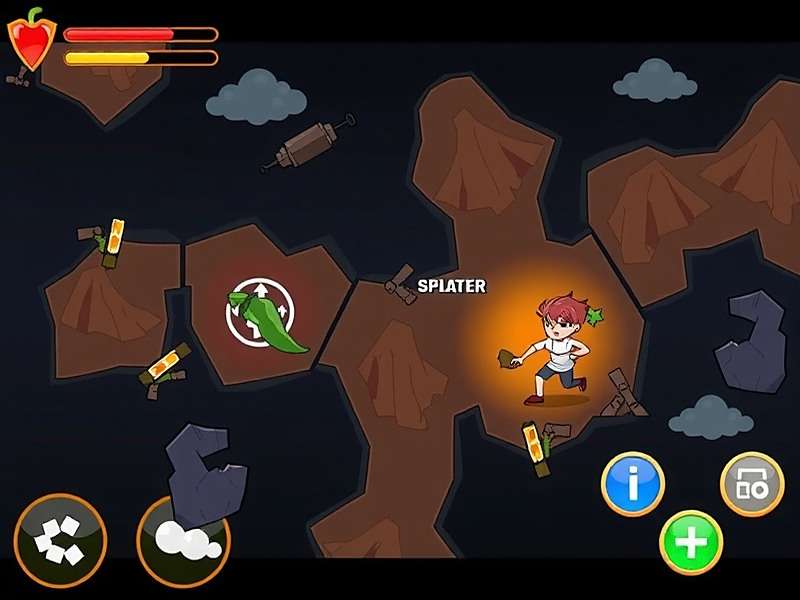
Development & History
The Idea Behind Hot Pepper Quest
The story of Hot Pepper Quest began in 2019 in a small gaming studio in Hyderabad. A team of six developers—hailing from Punjab, Tamil Nadu, West Bengal, Maharashtra, Karnataka, and Assam—gathered for their weekly "chai pe charcha" (discussion over tea) session.
"We were all playing popular open-world games, but none of them felt like home," recalls Ankit Roy, the game's lead designer. "They had castles and cowboys, but no chai wallahs or street food stalls. We wondered: why can't there be a game where you navigate through a Mumbai local train or bargain at a Chandni Chowk market?"
That question sparked a passion project. The team decided to create a game that would make Indian players say, "Yeh to hamare ghar ki tarah hai!" (This is just like our home!). They spent the next six months researching—traveling to 22 states, interviewing locals, and documenting traditions, dialects, and daily life.
One key insight emerged: spices are central to Indian identity. "Every household, every region, has its own relationship with spices," says Meera Krishnan, the game's narrative designer. "That's when we decided to make spices the core mechanic—they're not just power-ups, but a way to connect with the culture."
Development Journey & Launch
Development正式开始 in early 2020, but the COVID-19 pandemic presented unique challenges. With lockdowns restricting travel, the team relied on virtual interviews with locals, online cultural archives, and family members sharing stories from their hometowns.
"My grandmother in Varanasi became our main source for Uttar Pradesh's traditions," laughs Rohit Patel, a programmer. "She'd describe how people celebrate Holi there, and we'd translate that into in-game quests."
After two years of development, Hot Pepper Quest entered beta testing in March 2022 with 50,000 players across India. Feedback was overwhelmingly positive, but players requested more regional content and better language support—suggestions the team quickly implemented.
The game launched nationwide on October 15, 2022—coinciding with Dussehra, a festival celebrating good over evil. The timing was deliberate: "Dussehra is about adventure, victory, and community—exactly what our game stands for," explains Ankit Roy.
The launch was a phenomenon. Within 48 hours, Hot Pepper Quest reached 500,000 downloads, crashing the servers temporarily. "We were prepared for 100,000, not half a million," admits the team's tech lead. "It was a good problem to have!"
Post-Launch Evolution
Since launch, Hot Pepper Quest has evolved significantly based on player feedback. Major updates include:
• December 2022: Added 10 new regional languages, including Konkani and Manipuri.
• March 2023: Introduced Holi-themed content, with color-throwing mechanics and festival quests.
• June 2023: Expanded to Northeast India, adding Assam, Meghalaya, and Nagaland regions.
• October 2023: Launched multiplayer mode, allowing families and friends to play together.
• February 2024: Added "Village Life" expansion, focusing on rural India with farming and community quests.
• August 2024: Introduced "Spice Masters" competitive mode, with national tournaments and real-world prizes.
The development team has maintained a close relationship with players, hosting monthly "Spice Talks" on YouTube to share updates and gather feedback. "Our players aren't just customers—they're co-creators," says Meera Krishnan.
Gameplay Mechanics
Open-World Exploration
Hot Pepper Quest features a vast open world spanning 15 distinct regions of India, each meticulously recreated to reflect local geography, architecture, and culture. The world is 1:200 scale, meaning traveling from Delhi to Chennai in-game takes about 15 minutes—encouraging players to explore every corner.
What makes the world feel alive is its attention to detail. In Mumbai, you'll navigate crowded streets where vendors shout "vada pav garam hai!" and avoid speeding auto-rickshaws. In Kerala, early mornings bring the sound of backwater boats and women singing traditional songs while washing clothes.
Weather and time of day affect gameplay: monsoons in West Bengal make roads muddy and slow travel; Rajasthan's midday sun causes heat exhaustion, requiring players to find shade or drink lassi; and nightfall in rural areas brings out fireflies and the sound of village drums.
Exploration is rewarded with hidden treasures, side quests, and "cultural insights"—short videos explaining real-life traditions related to what you've discovered. "We want players to learn while they play," says the game's cultural consultant, Dr. Vandana Sharma.
Spice Powers & Inventory
Spices are the heart of Hot Pepper Quest's gameplay, with over 30 types to collect, each with unique abilities:
• Red Chili: Grants a 15-second speed boost but leaves you "burning" for 5 seconds afterward, reducing vision.
• Turmeric: Slowly heals 60% of health over 12 seconds—mirroring its real-life medicinal properties.
• Cardamom: Enhances perception, allowing you to see hidden objects and footprints for 2 minutes.
• Coriander: Makes you friendly to animals, who will guide you to secrets or protect you from threats.
• Clove: Creates a sound barrier, masking your presence from enemies or nosy NPCs.
Spices can be combined into "masalas" (spice blends) for stronger effects. The "Garam Masala" blend, for example, combines cinnamon, cardamom, and cloves to grant temporary invincibility—perfect for tricky quests.
Your inventory includes a "spice pouch" with limited space, encouraging strategic collection. Spices are region-specific: red chilies are abundant in Andhra Pradesh, while saffron is rare and found only in Kashmir—encouraging players to explore all regions.
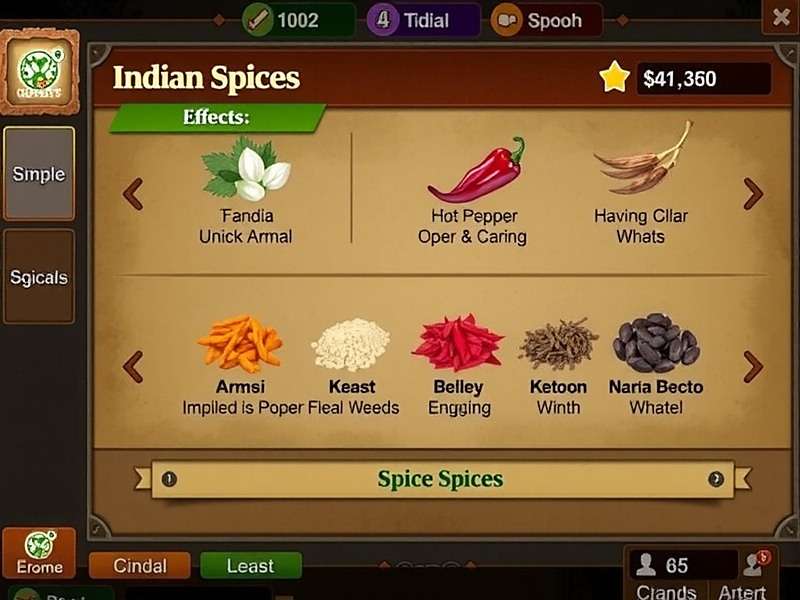
Quests & Moral Choices
Quests in Hot Pepper Quest are designed to reflect Indian values like community, respect for elders, and celebration of diversity. There are over 800 quests in total—main story quests focused on finding the Legendary Pepper Seeds, and side quests that highlight local traditions.
Examples of memorable quests include:
• "The Great Kite Chase" (Gujarat): Help a young boy retrieve his kite from a mango tree during Makar Sankranti. You can climb the tree (risking a fall) or ask the village elder for a traditional kite-recovery trick—teaching patience and respect for wisdom.
• "Pongal Perfection" (Tamil Nadu): Assist a family in cooking the perfect pongal. Adding too much jaggery makes it too sweet; too little, and it's bland. The quest teaches about balance—both in cooking and life.
• "Tea Garden Troubles" (Assam): Mediate a dispute between tea pickers and the estate owner. Choosing to listen to both sides and find a compromise earns you the "Peacemaker" title and rare Assam tea spice.
Moral choices matter. Refusing to help a stranger might save time, but word spreads—NPCs in nearby villages will be less helpful. Conversely, going out of your way to assist others unlocks "Good Karma" bonuses, like discounts at shops or exclusive quests.
Combat & Conflict Resolution
Combat in Hot Pepper Quest is minimal and avoidable, reflecting the game's focus on community over conflict. Most "enemies" are simply people in difficult situations: a drunkard causing a disturbance, a group of mischievous kids stealing fruit, or a corrupt official demanding bribes.
Players can choose to resolve conflicts peacefully or through light combat inspired by Indian martial arts like Silambam (Tamil Nadu), Gatka (Punjab), or Thang-Ta (Manipur). Peaceful solutions almost always yield better rewards:
• Instead of fighting the drunkard, buy him a glass of sweet lassi to sober him up—he'll apologize and give you a rare spice.
• Rather than chasing the fruit-stealing kids, join their game—they'll invite you to a secret mango grove with rare spices.
• Instead of confronting the corrupt official, gather evidence and report him to the village council—earning you the respect of the entire region.
This approach has resonated with Indian players, many of whom appreciate the emphasis on harmony. "In our culture, we try to resolve conflicts with dialogue, not fists," says a player from Lucknow in a review.
Customization & Progression
Hot Pepper Quest offers extensive customization options that let players express their regional identity. You can dress your character in traditional attire from different states:
• A Punjabi kurta-pajama with a turban that protects from sun in desert regions.
• A Bengali dhoti-kurta that dries quickly when wet—useful in monsoon areas.
• A South Indian veshti and angavastram that keeps you cool in hot climates.
• A Kashmiri phiran that provides warmth in mountain regions.
You also get a "Spice Hut" that serves as your base, customizable with regional decor: a Rajasthani jharokha window, a Bengali alpana floor design, or a South Indian kolam pattern.
Progression is based on "Spice Mastery" levels, unlocked by collecting spices, completing quests, and learning cultural facts. Higher levels grant access to new regions, better spice-crafting abilities, and exclusive content like historical tours of iconic Indian sites.
Localization: Made for Indian Players
Language Support: Speaking India's Tongues
One of Hot Pepper Quest's most praised features is its extensive language support. The game currently offers 24 Indian languages, covering all major tongues and many regional dialects:
• North India: Hindi (with Bhojpuri, Haryanvi, and Rajasthani dialects), Punjabi, Urdu.
• South India: Tamil, Telugu, Kannada, Malayalam (with Kundapura and Kasargod dialects).
• East India: Bengali, Odia, Assamese, Bodo.
• West India: Marathi, Gujarati, Konkani.
• Northeast India: Manipuri, Khasi, Garo, Mizo.
• Other: Sanskrit (for traditional quest dialogues), English (for national consistency).
The team worked with linguists and native speakers to ensure accuracy. For example, in Tamil, the word for "spice" changes based on context—"milagu" for black pepper as a spice, but "milagu" with a different intonation when referring to its medicinal use. The game captures these nuances.
Voice acting is also region-specific. A Chennai NPC speaks with a authentic Madras bashai accent, while a Delhi character uses the city's distinctive Hindi with Urdu influences. "We wanted players to hear their own voices in the game," says the localization lead, Ravi Shankar.
Regional Content Variations
Hot Pepper Quest doesn't just translate content—it adapts it to regional cultures. When players enable location services, the game tailors content to their region:
• North India: More emphasis on Mughal history, Punjabi harvest festivals, and Himalayan treks. NPCs offer chai and parathas, and winter brings snow to mountain areas, changing gameplay.
• South India: Focus on temple architecture, Carnatic music, and coconut-based economies. Monsoons create new water routes, and NPCs greet you with "vanakkam" or "namaskaram."
• East India: River-based quests in Bengal, tea garden challenges in Assam, and Durga Puja celebrations with special idol-making mini-games. Floods during monsoons require boat navigation.
• West India: Desert survival in Rajasthan, Ganesh Chaturthi processions in Maharashtra, and Gujarati garba dance mini-games. Camels serve as transportation in arid regions.
• Northeast India: Jungle exploration, bamboo craft quests, and Hornbill Festival events in Nagaland. Unique spices like Bhut Jolokia (ghost pepper) provide powerful but risky abilities.
These variations mean players from different regions experience the game differently. "When I visited my cousin in Kolkata, I was amazed to see how different his Hot Pepper Quest looked—different quests, foods, even NPC behaviors," says a player from Bangalore.

Festival Integration
Festivals are the soul of Indian culture, and Hot Pepper Quest celebrates them with special in-game events that change the world and offer unique quests:
• Diwali: The game world lights up with diyas, rangolis, and firecrackers. Quests include helping families clean their homes, making rangolis, and solving "Lakshmi puja" puzzles. Collecting "diya spices" grants 2x rewards for 24 hours.
• Holi: Players can throw colored powder (gulal) at NPCs and friends, with different colors granting different buffs. Special "Holi dhamaka" quests involve creating the largest color cloud or winning tug-of-war competitions.
• Eid: Markets transform with sewaiyan stalls and mehendi artists. Quests include preparing for Eid prayers, distributing sweets, and solving geometric pattern puzzles inspired by Islamic art. The "dates spice" heals all injuries instantly.
• Pongal: Tamil Nadu regions focus on harvesting sugarcane, decorating cows, and cooking pongal. Winning the pongal contest grants a "golden pongal" item that attracts rare spices for a week.
• Durga Puja: Bengal regions come alive with pandals, dhak drums, and idol processions. Quests involve helping create Durga idols, organizing cultural events, and protecting the pandal from mischief-makers.
These events are timed to real-world festivals, creating a sense of celebration among players. "My family now plans our Diwali around the game's events—we decorate our in-game hut together before doing our real home," says a player from Ahmedabad.
Download Statistics & Player Base
📊 Total Downloads in India: 68 million+ (as of October 2025)
🌍 Top States: Maharashtra (14.3M), Uttar Pradesh (11.7M), Tamil Nadu (9.8M), Karnataka (8.2M), West Bengal (6.9M)
📱 Platform Distribution: Android (87%), iOS (12%), PC (via emulators, ~1%)
👥 Daily Active Users (DAU): 3.8 million
⏱️ Average Session Time: 31 minutes
👨👩👧👦 Multiplayer Sessions per Day: 950,000+ (mostly family groups)
Growth Trajectory
Hot Pepper Quest's growth has been remarkable, defying typical mobile game trends by maintaining steady growth long after launch:
• October 2022 (Launch): 500,000 downloads in 48 hours; 1.2 million by month-end. Initial players concentrated in metro cities.
• December 2022: 5 million downloads. Word-of-mouth spread to tier-2 cities like Surat and Vijayawada.
• March 2023 (Holi Update): 12 million downloads. Rural adoption began rising, aided by partnerships with Airtel and Jio for free data packs.
• June 2023 (Northeast Expansion): 22 million downloads. Added regional languages drove growth in Bihar, Odisha, and Assam.
• October 2023 (1st Anniversary): 35 million downloads. Featured in Indian gaming awards, boosting mainstream recognition.
• March 2024 (Multiplayer Launch): 48 million downloads. Family-focused multiplayer drove adoption among older demographics.
• October 2024: 59 million downloads. National tournament coverage on regional TV channels expanded reach.
• October 2025: 68 million downloads and counting. Sustained growth attributed to regular content updates and cultural relevance.
"What's unique is that our player base keeps growing even during non-festival periods," says the game's marketing head. "Players don't just come for events—they stay for the cultural connection."
Player Demographics
Hot Pepper Quest boasts one of the most diverse player bases in Indian mobile gaming:
• Age Distribution: 28% under 18, 45% 18-35, 27% 36+. This broad age range is rare—most mobile games skew under 30, but Hot Pepper Quest's family-friendly content attracts older players.
• Gender Split: 51% male, 49% female. This near-parity is almost unheard of in open-world games, which typically see 70-80% male players. Developers credit inclusive quest design and cultural focus.
• Urban vs. Rural: 52% urban, 48% rural. This balanced split reflects the game's accessibility—optimized for low-end devices and 2G networks, with extensive offline content.
• Play Patterns: 65% play daily for 10-25 minutes (often during commutes or tea breaks), 25% play 1-2 hours on weekends, and 10% are "spice enthusiasts" logging 5+ hours weekly.
Notably, 28% of players engage primarily with the game's "cultural exploration" mode, ignoring combat and focusing on interacting with NPCs and learning traditions. "My 70-year-old grandfather can't play complex games, but he loves watching me explore villages and listen to the characters speak in our dialect," says a player from Patna.
Player Reviews & Reception
Aggregate Ratings
Hot Pepper Quest has received widespread acclaim across app stores and gaming platforms:
• Google Play Store: 4.6/5 from 10.8 million reviews
• Apple App Store: 4.7/5 from 1.9 million reviews
• Featured in Google Play's "Best of 2023" and Apple's "Game of the Year" (India region).
• Winner of "Best Indian Game" at the 2023 Global Mobile Gaming Awards.
Critics praise the game's cultural authenticity, engaging gameplay, and family-friendly approach. "Hot Pepper Quest isn't just a game—it's a digital love letter to India," wrote one gaming journalist.
Player Praise: Real Voices
"As someone who left Kerala to work in Mumbai, this game makes me homesick in the best way. The backwater villages look exactly like my hometown, and the characters speak in my dialect! When I heard an NPC say 'chetta' (brother) the way we do, I almost cried. 5 stars forever!" — Suresh K., Mumbai (Google Play)
"My kids (8 and 11) and I play together every evening. They're learning about Indian states and spices without even realizing it! Last week, my daughter asked to make pongal after completing the Tamil Nadu quest. This game is teaching our culture to the next generation. Thank you, Hot Pepper Quest!" — Anjali P., Hyderabad (App Store)
"The attention to detail is mind-blowing. In the Punjab region, the NPCs offer lassi exactly how my grandmother does—with a little cardamom on top. The way people bargain in the Delhi market quests? Perfectly captures Chandni Chowk! This game gets India right, and that's why we love it." — Rajiv S., Amritsar (Google Play)
"I'm a history teacher, and I use this game in my class! The cultural insights section is accurate and engaging. My students now ask questions about festivals and traditions they've encountered in the game. Who knew a mobile game could be such a great educational tool?" — Priya M., Chennai (App Store)
Criticisms & Improvements
While overwhelmingly positive, player feedback has highlighted areas for improvement, many of which the developers have addressed:
• Performance on Low-End Devices: Early reviews noted lag on budget phones. The 2023 "Lightweight Update" reduced file size by 40% and optimized graphics for low-end devices.
• More Regional Content: Players from states like Sikkim and Goa requested more representation. The 2024 "Coastal Explorers" update added Goa, while Sikkim is scheduled for 2026.
• Offline Limitations: Rural players with limited internet wanted more offline quests. The game now offers 80% of content offline, with periodic syncs for updates.
• Quest Repetition: Some players noted repeating side quests. The team introduced "dynamic quests" that change based on player behavior and region.
The developers maintain a public "feedback tracker" showing which suggestions are being worked on. "We don't just listen to feedback—we show players we're acting on it," says community manager, Zoya Khan.
Indian Player Guides & Pro Tips
Regional Quest Strategies
Indian players have developed clever strategies based on local knowledge. Here are some pro tips from top players:
• North India (Delhi): In the "Chandni Chowk Bargain" quest, start with 30% lower than your target price—vendors expect heavy bargaining. Buy jalebis from the oldest shop—they give a free turmeric spice as "blessings."
• South India (Chennai): During the "Marina Beach Cleanup" quest, collect seashells while working—they can be traded to the local fisherman for a "sea breeze" buff that prevents overheating from spices.
• East India (Kolkata): The "Howrah Bridge Rush" quest is easiest during Durga Puja—police NPCs are distracted, letting you cross faster. The tea stall under the bridge serves "special chai" if you ask for it with "extra ginger"—grants 10% speed boost.
• West India (Ahmedabad): In the "Rann Utsav" desert quest, follow the folk musicians—they know secret water holes. Sharing your water with them unlocks a rare "desert rose" spice.
• Northeast India (Shillong): During the "Waterfall Trek" quest, use coriander spice near monkeys—they'll guide you to a shortcut. Never refuse bamboo shoots from villagers—they restore spice energy!
Pro Tip from Arjun, Top 50 Player (Bengaluru): "Learn regional greetings! In Punjab, saying 'sat sri akal' to elders gives +15% reward. In Tamil Nadu, 'vanakkam' to temple priests unlocks hidden quests. These small touches make a big difference!"
Spice Mastery Guide
Mastering spices is key to success in Hot Pepper Quest. Here's how top players use them:
• Red Chili Management: Use red chili only on straight paths (like highways or desert roads). In crowded areas (Mumbai markets, Varanasi ghats), you'll just collide with NPCs and waste the boost.
• Turmeric Timing: Activate turmeric 10 seconds before expected combat. It heals over time, so starting early maximizes its effect. Pair with clove spice to avoid interruptions while healing.
• Masala Combinations: The "Ultimate Masala" (red chili + cardamom + coriander) is perfect for boss fights—speed, perception, and animal allies. To make it, grind spices in a circular motion (as taught by Tamil Nadu NPCs).
• Spice Conservation: Always carry 2-3 "cooling items" (lassi, buttermilk, coconut water) to reset your spice meter when full. This prevents "overheating" and lets you use more spices consecutively.
• Regional Spice Priority: Focus on collecting region-specific spices first—they're harder to find elsewhere. Kashmir saffron, Assam pepper, and Kerala cardamom are particularly valuable for high-level quests.
"I never go on a quest without my 'essential trio': turmeric for healing, cardamom for perception, and coriander for animal help," says Shweta, a popular Hot Pepper Quest streamer with 800,000 subscribers.
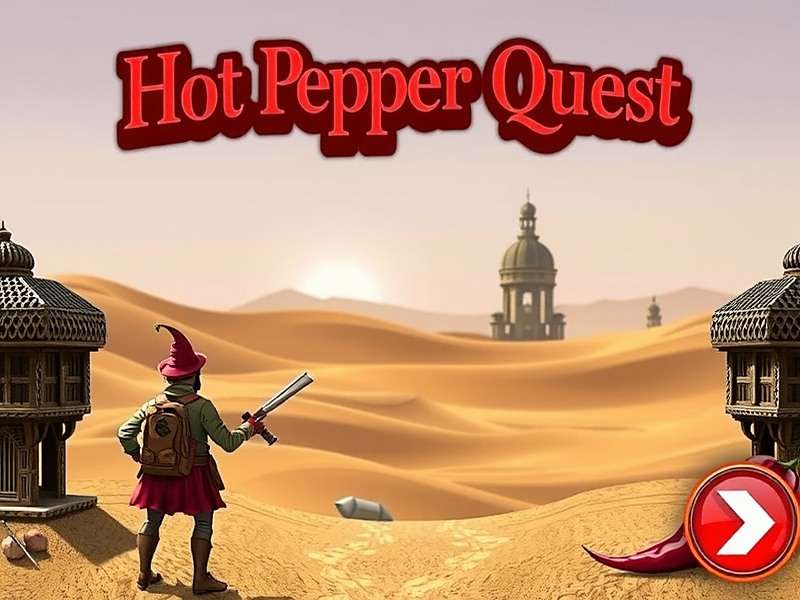
Festival Event Hacks
Festival events offer the best rewards—here's how to maximize your gains:
• Diwali: Complete rangoli quests first—they give the most "Lakshmi coins." Use diya spices between 7 PM-12 AM in-game for double rewards. Light all diyas in a village to spawn a treasure chest with rare spices.
• Holi: Team up with 3 friends—throwing colors at each other (instead of NPCs) yields 30% more points. Red and yellow colors are most valuable—focus on collecting those first.
• Eid: The "sewaiyan delivery" quest is time-sensitive, but taking alleyways (ask local kids for directions) cuts delivery time by 40%. Donate 10% of rewards to the in-game mosque for a "blessing buff."
• Pongal: Win the cooking contest by adding jaggery in three increments. Stir clockwise exactly 10 times—this is the "secret" NPCs hint at. Feed the contest-winning pongal to cows to find hidden seeds.
• Durga Puja: Help make the Durga idol's eyes first—this grants "divine protection" for the rest of the event. Participate in the dhak drum mini-game at night for rare "blessed spices."
Multiplayer Team Strategies
Hot Pepper Quest's multiplayer mode thrives on cooperation, and Indian players have developed team strategies that leverage family and regional strengths:
• Family Teams: Assign roles by age: kids (8-15) excel at quick spice collection and mini-games; adults (16-50) handle navigation and combat; elders (50+) solve cultural puzzles and negotiate with NPCs.
• Regional Expertise: Include at least one player from the region you're exploring. A Punjabi player knows the best harvest quest shortcuts; a Bengali player can ace Durga Puja challenges.
• Communication: Use local languages for better coordination. "We play in Gujarati—jokes aside, it's easier to shout 'danger!' or 'spice here!' in our mother tongue," says a top Gujarat team.
• Resource Sharing: Specialize in different spices. One player focuses on healing spices, another on speed, creating a balanced team that can handle any situation.
The most successful teams in national tournaments often consist of family members or close friends who know each other's strengths. "Our team is me, my brother, and our dad—we've been playing together since launch, and that chemistry wins matches," says a 2024 tournament finalist.
Local Events & Tournaments
National Hot Pepper Championship
The biggest event in the Hot Pepper Quest calendar is the annual National Hot Pepper Championship, held every October to coincide with the game's launch anniversary.
The tournament spans three weeks, with regional qualifiers in 25 cities, followed by a grand finale in a different host city each year (2024: Hyderabad; 2025: Kolkata).
Competitors battle in three categories:
1. Speed Questing: Fastest completion of a regional quest course.
2. Spice Mastery: Most efficient use of spices to solve challenges.
3. Cultural Knowledge: Answering questions about Indian traditions featured in the game.
The 2024 championship drew over 800,000 participants, with the finale streamed live on YouTube and regional TV channels, attracting 2.8 million viewers. The winner, 21-year-old Nikhil Desai from Pune, took home ₹75 lakhs (7.5 million rupees) and a tour of India's top spice farms.
Nikhil's victory was notable for his creative use of regional knowledge: "I used a Maharashtrian folk song rhythm to solve the final puzzle—something my grandmother taught me. That's the beauty of this game—it rewards real cultural understanding."
Festival Tournaments
Each major Indian festival brings a special tournament with unique challenges and rewards:
• Diwali Spice Cup: Teams compete to create the most elaborate virtual rangoli. The top 50 designs are printed on real Diwali greeting cards sent to participants. In 2024, the winning design was displayed at Delhi's India Gate.
• Holi Color Challenge: Players form teams of 5 to cover as many NPCs as possible with colored powder in 45 minutes. The winning team receives a year's supply of organic Holi colors from a Rajasthan-based manufacturer.
• Eid Charity Tournament: Quests focus on helping in-game communities, with proceeds from entry fees donated to real-world charity. The 2023 event raised ₹25 lakhs for flood relief in Assam.
• Pongal Cooking Contest: Players submit virtual pongal recipes, with the best ones compiled into a real cookbook. The 2024 winner's recipe was featured in a Chennai restaurant chain.
These tournaments blur the line between game and real life, creating shared experiences for players. "My neighborhood in Jaipur organizes a Hot Pepper Quest Diwali tournament—we set up projectors in the park and play together," says a local player.
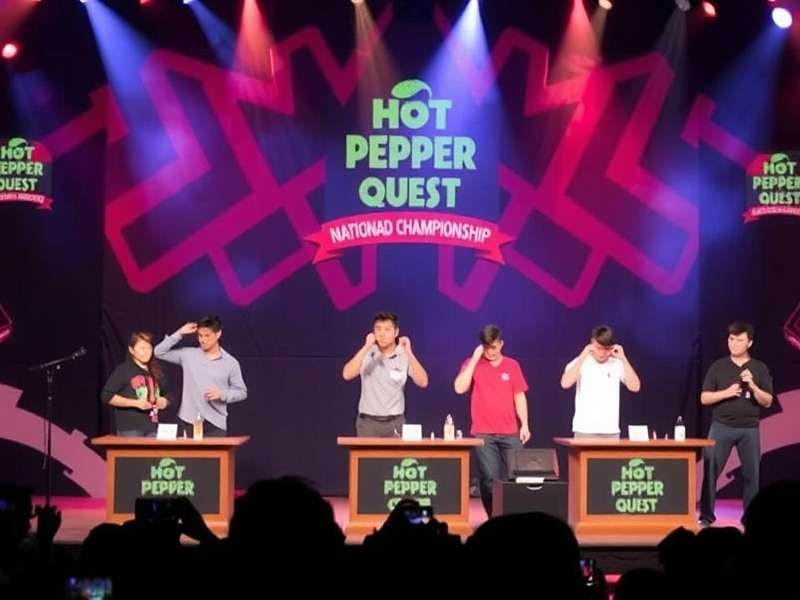
Community Meetups & Real-World Events
Hot Pepper Quest has fostered a strong offline community through player-organized and official meetups:
• City Meetups: Monthly gatherings in 30+ cities, where players dress as their in-game characters, share tips, and play on big screens. Mumbai's monthly meetup regularly draws 500+ players.
• Spice Trail Tours: Organized by the developers, these tours take players to real locations that inspired in-game regions. The 2024 tour visited a Kerala spice farm, Rajasthan desert village, and Tamil Nadu temple town.
• Cultural Workshops: Many player groups host workshops teaching traditions featured in the game—rangoli making, pongal cooking, and garba dancing. "I learned to make proper kolam designs from a Hot Pepper Quest workshop," says a player from Coimbatore.
• Charity Drives: Inspired by the game's kindness quests, players organize real-world charity events. In 2023, Bangalore players collected 10,000 kg of food for orphanages during the game's "Sharing Festival" event.
The largest meetup to date was the 2024 Holi celebration in Ahmedabad, where 4,000+ players gathered to play the game, throw colors, and attempt a Guinness World Record for the largest human rangoli (shaped like the game's logo).
Community & Discussions
Online Community Hubs
Hot Pepper Quest's community is one of the most active in Indian gaming, with millions connecting across platforms:
• Facebook Groups: The main group, "Hot Pepper Quest India," has 2.5 million members. 32 regional groups (e.g., "Hot Pepper Quest Punjab," "Hot Pepper Quest Kerala") focus on local strategies.
• WhatsApp Groups: Over 8,000 local groups exist, with specialties like "Spice Traders" (for exchanging in-game spices), "Festival Prep" (event strategies), and "Family Players" (parent tips).
• Reddit: r/HotPepperQuest has 480,000 subscribers, with daily posts ranging from fan art to bug reports. The weekly "Regional Lore" thread explores real stories behind game quests.
• YouTube & Instagram: 8,000+ content creators make Hot Pepper Quest videos. Top creators like "SpiceKing" (1.1M subs) and "DesiGamerGirl" (850K subs) post guides, lore explanations, and real-world visits to game locations.
• Twitter (X): The official @HotPepperQuest account has 1.3M followers, with the hashtag #HotPepperQuest trending during updates and events (typically 40,000+ posts in 24 hours).
Community Discussions & Trends
Community conversations blend gameplay strategies with real Indian culture, creating a unique social space:
• Lore Debates: Players passionately discuss the real history behind quests. "Is the 'Ghost of Fort Kochi' based on Portuguese legends or local myths?" sparked a months-long discussion in 2024, with historians joining in.
• Spice Trading Networks: Since spices are region-specific, players have created informal trading systems. "I send Andhra red chilies to my friend in Punjab, and he sends me cardamom—just like the old spice routes!" says a player from Vijayawada.
• Fan Theories: Players love speculating about upcoming content. The most popular theory: a "Legendary Spice Market" expansion set in Old Delhi, featuring historical figures from India's spice trade.
• Culture Sharing: The community serves as a platform for cross-cultural learning. A Punjabi player made a viral video explaining Lohri for non-Punjabi players, while a Bengali player taught Durga Puja traditions via livestream.
• Memes & Humor: Indian-specific memes abound, like "When you try to use red chili in a Mumbai local train quest" (showing a character crashing into commuters) and "NPC aunties judging your spice collection" (parodying real-life auntie behavior).
Developer-Community Collaboration
The developers of Hot Pepper Quest have built a model for community engagement, treating players as partners in the game's evolution:
• Monthly "Spice Chats": Live streams where developers showcase upcoming features and answer questions. Players vote on new content—e.g., in 2024, they chose a Goa expansion over a Himachal Pradesh one (Himachal is coming in 2026).
• Player Ideas in the Game: Many features originated from community suggestions: - The "chai stall" fast-travel points came from a Delhi player. - The Bengali "pitha-making" mini-game was suggested by a Kolkata player. - The "langar feeding" quest in Punjab was added after Sikh players explained the tradition.
• Bug Bounty Program: Players who report glitches receive in-game rewards. A 13-year-old from Jaipur found a major bug in the 2023 Diwali event and got a custom "Rajput Warrior" skin named after him.
• Cultural Advisory Council: A group of 20 players from different states advises on regional accuracy. "They catch things we might miss—like how a particular festival is celebrated in a small village vs. a city," says Meera Krishnan.
This collaboration has created a sense of ownership among players. "We don't just play Hot Pepper Quest—we help build it," says a long-time community member from Chennai.
Download & Login
Ready to embark on your spicy adventure across India? Join 68 million players already exploring Hot Pepper Quest. Download now and receive a free "Starter Spice Kit" with 5 essential spices to begin your journey!
📱 Download Hot Pepper Quest for Android 🍎 Download Hot Pepper Quest for iOSAlready on your quest? Log in to sync your progress, join friends for multiplayer adventures, and claim your daily spice rewards. New logins receive a free regional outfit based on your location—show off your cultural pride!
🔓 Login to Hot Pepper QuestPro tip: Refer a friend and both earn 1,000 in-game coins. If they play for 7 consecutive days, you'll unlock the rare "Friendship Masala"—a power-up that makes both of you invincible for 5 minutes in multiplayer. Perfect for tackling tough regional quests together!
Frequently Asked Questions (FAQs)
Is Hot Pepper Quest free to play?
Yes! Hot Pepper Quest is 100% free to download and play. It offers optional in-app purchases for cosmetic items (special outfits, hut decorations) and additional spice packs, but every quest and region can be unlocked without spending money. We believe everyone should experience India's culture, regardless of budget!
What devices support Hot Pepper Quest?
The game works on most Android devices (Android 6.0 or higher) and iOS devices (iOS 11.0 or later). It's optimized for low-end smartphones—you can play smoothly on devices priced at ₹4,000 or more. PC players can use emulators like BlueStacks, though the mobile version offers the best touch-based experience.
Can I play Hot Pepper Quest offline?
Absolutely! Over 80% of the game is playable offline, including main story quests, regional exploration, and spice collection. Multiplayer mode, live events, and leaderboards require an internet connection, but you can enjoy most content without data. This makes it perfect for areas with limited connectivity.
How often does Hot Pepper Quest receive updates?
Major updates (new regions, spices, story chapters) are released every 3 months. Festival updates arrive 2 weeks before major Indian festivals. Small updates (bug fixes, balance adjustments) happen monthly. We also release "spice patches"—quick fixes based on player feedback—every 2-3 weeks.
How can I contact customer support?
We offer 24/7 support in 15 Indian languages through multiple channels: - In-game "Help" button (fastest response, usually within 3 hours) - Email: [email protected] - Official Facebook/Instagram messages - Toll-free phone: 1800-PEPPER-1 (1800-737737-1) for urgent issues
Is Hot Pepper Quest suitable for children?
Yes! The game is rated 7+ and is family-friendly. All content focuses on Indian culture, traditions, and positive values like kindness and community. There's no violence, inappropriate language, or mature themes. Parents can enable "Family Mode" to restrict multiplayer and set daily playtime limits.